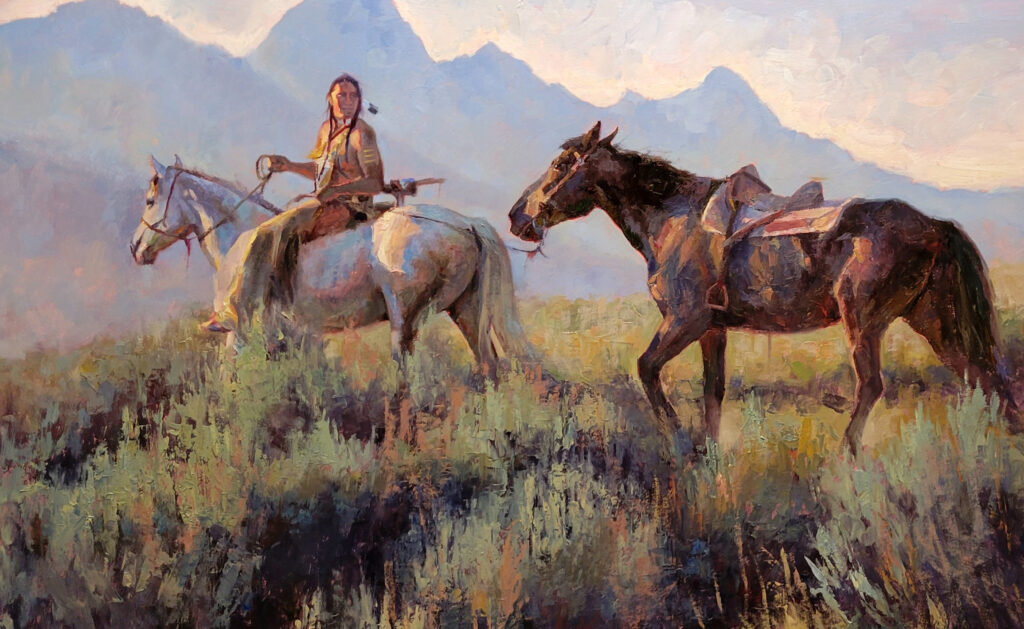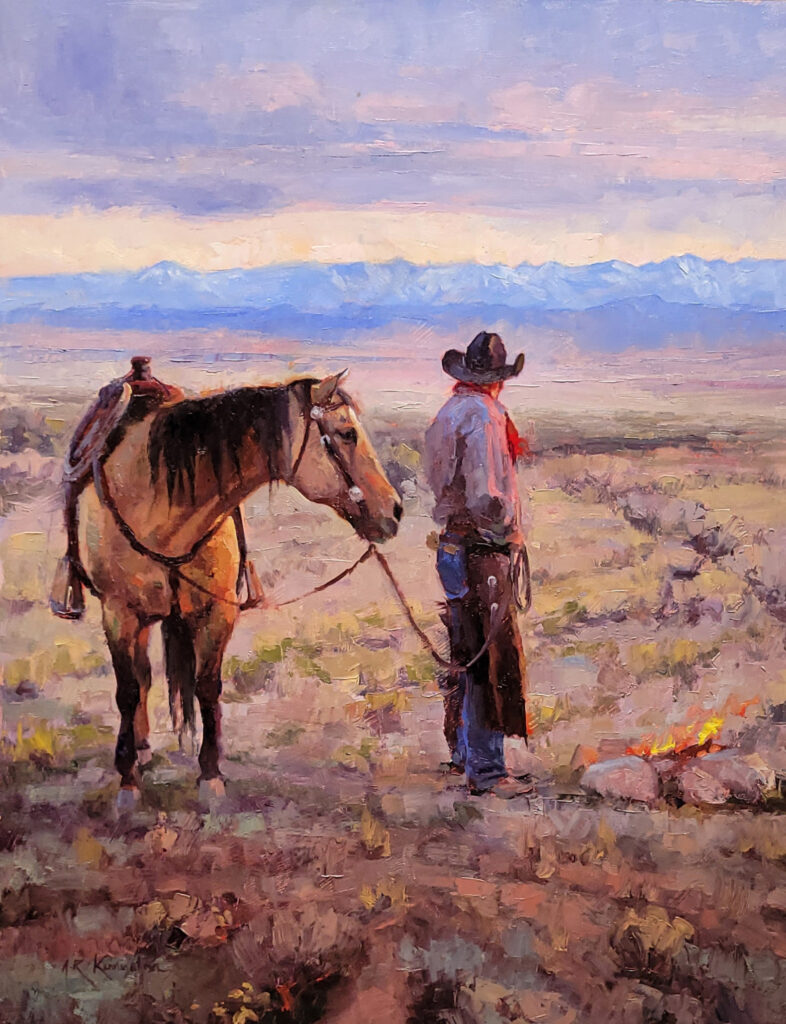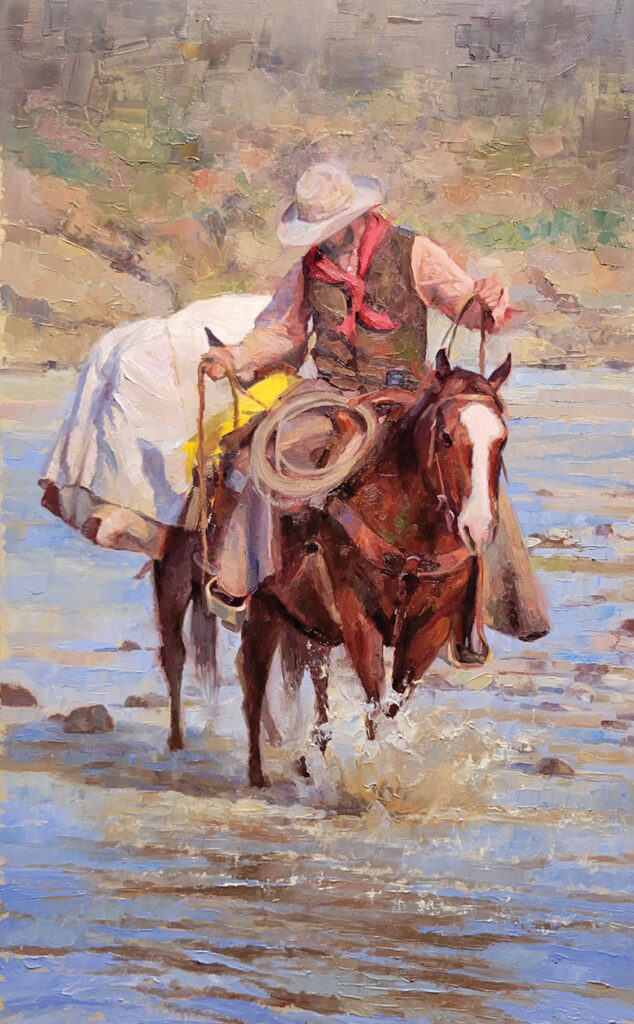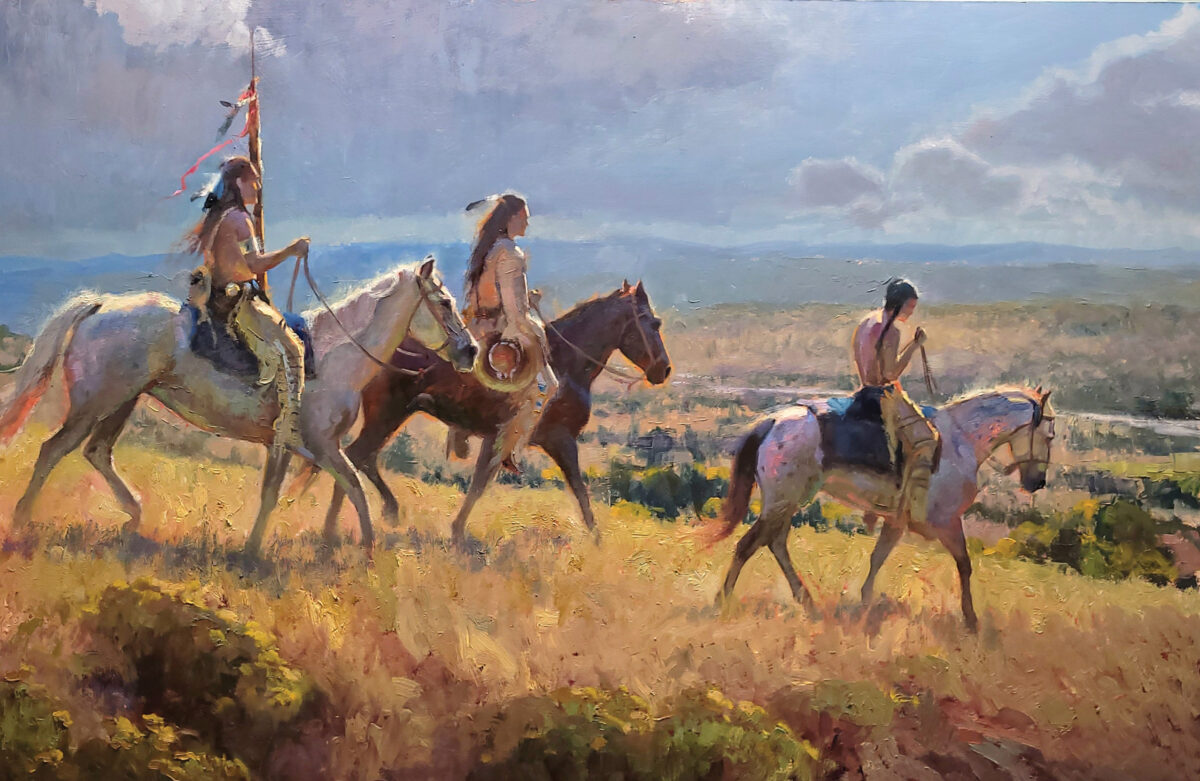Whatever subject or scene Rick Kennington paints—American Indians in the saddle or in camp, contemporary or Old West cowboys at work—his blend of techniques lends his works a life of their own. But that wasn’t always the case.
“I used to paint thin with many layers,” recalls the artist [rickkennington.com] from his home studio in North Salt Lake, Utah.

His mentors told him to use more paint—and when one’s mentors include such masters in their own right as Grant Redden, Jason Rich, Chad Poppleton and Charles Dayton, one listens.
“I was instructed to purchase the larger tubes of paint to encourage me to have heavier loads of paint on my pallet and to have the stiffer bristle brushes to help gather heavy loads,” Kennington explains. “Over time I became fascinated with paintings that have a high paint quality—meaning, the paint and texture have aesthetic appeal.
“It’s amazing at times to remember how different my mindset was 20 years ago,” he says. “I thought I had a good handle on painting. However, the more I learn and study, the more I realize I have much further to go. I enjoy seeing how my work has evolved and progressed over the years.”
That progression began in boyhood when he watched his older sister draw and sketch and tried to match her skills. His parents fostered their son’s budding interest with gifts of drawing pads, pencils and instructional art books. Family trips to Jackson, Wyo., stirred Kennington’s love of Western subjects.
“I remember walking into the Legacy Gallery, which is no longer there, and being blown away by all the paintings from the best contemporary artists…artists such as Bill Anton, Clyde Aspevig, Tom Browning and Jason Rich,” he recalls. “I wondered how amazing it would be to have my artwork hanging on the walls in a gallery like that.”

Thus inspired, Kennington worked hard and earned an art scholarship to Salt Lake Community College. He later transferred to the University of Utah, where he attended workshops, learned from established artists and gradually shed bad habits.
“I remember asking one of my mentors, ‘How do I get my work in a gallery?’” he recalls. “After a thoughtful pause came the sincere reply, ‘Become so good at painting that they can’t ignore you.’ I took that to heart and continued to improve my skills.”
His focus on the West came naturally.
“I come from deep-rooted Western pioneer stock,” he says. “In the late 1800s my great-great-grandfather William Henry Kennington settled Star Valley, Wyo., where he raised his family. This is where my lineage comes from.”

The artist spends most of his time in the studio, though he paints plein air a few times a year. “Painting outdoors is more of a break for me,” he says.
But Kennington doesn’t feel constrained working indoors.
“As an artist, I don’t feel I have a stringent routine other than trying to get in as much painting as I can,” he says. “I do have to say, one of my routines is to constantly clean up. I am not a neat and tidy artist. I don’t know how, but I tend to get paint all over the place. I constantly go through new clothing, and I am always cleaning up paint left by me all throughout the house.…My wife is amazing.”
As models he often uses friends on horseback, but he’s also taken photographs on professional artist rides in South Dakota. Kennington uses such photos as a reference point. “Much of my painting—such as value, color and compositions—are created outside of the photo,” he explains. “Much of this comes from years spent painting outdoors, studying other great artwork and a whole lot of practice.

“There’s a lot that goes into creating a painting. I enjoy putting in the practice and research of creating art. I spend a lot of time on thumbnail sketches, working out designs and layouts of ideas floating around in my head. I’ll use photo references to help with sketches. But I mostly try to make sure the design and problems with the photos can be worked out as I practice with the sketches. It can take multiple sketches and hours of study before I develop a design I can live with. I then use this knowledge to place paint on the canvas.”
Kennington is certainly keeping busy, enjoying his career as well as his family. Though his sons are gifted artists, they are interested in other things. “I’m glad each is his own person,” the artist says. “My family puts up with me well. I am so grateful for their support.”
Kennington aspires to create historically accurate paintings of the five American Indian nations of Utah. “There is a lot of history and story that needs to be told,” he says. “I’ve always loved learning about native American history, specifically about the Utah nations. I am fascinated with their culture. They are beautiful people, and I hope my artwork represents them in the best light.”
Meanwhile, he’s still learning the craft.
“If I continually learn and practice, I will continue to elevate my work,” he says. “The struggle of becoming a better artist is part of the satisfaction art brings. I don’t know if I will ever ‘make it’ as an artist, because I feel I am a continual student, striving for the next level.
“I enjoy paintings that look like paintings,” the artist says of his more recent work. “I aim for accuracy in drawing, value and color. But I enjoy using thick paint and challenging myself with a looser, or Impressionist, approach. I try to give the viewer an emotion driven from other aspects that can’t be provided by a photo.”Kennington’s commitment to the West remains as firm as his commitment to his craft. “Growing up in the West and being outdoors is a major part of my life,” he says. “I’ve enjoyed growing up around horses, ranches and the Western landscape. Much of the Western ranches and landscapes have been lost with new development, especially in Utah. I feel art is a way to help preserve and maintain the history and culture of the West.”






